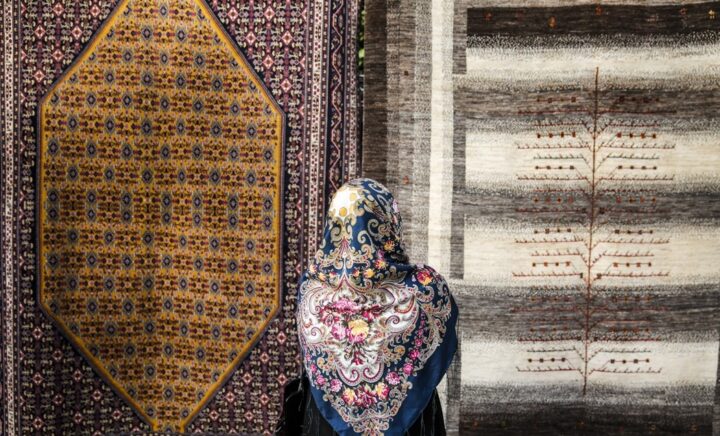The following contribution is from another author.
Gabbeh rugs offer a warm and natural look that complements any decor. They feature rich colors – including yellows such as honey, sun, and curry; earthy beiges and browns like sand, peat, and caramel; and reds and blues from natural plant and mineral dyes.
Using simple styling techniques, you can easily incorporate Gabbeh rugs into any room in your home.
They’re Handmade
A Gabbeh rug is a unique piece of art showcasing the skills and talents of the nomadic weavers who weaved it. Unlike other rugs that may feature standardized themes and colors, handmade Gabbeh rugs are born from improvisation, making them unique.
They are made of natural, hand-spun wool dyed with a wide range of earthy colors. These dyes are often made from indigo, madder root, pomegranate, and onion skins, creating a fantastic spectrum of hues.
Gabbeh rugs can be used alone or as a layering piece underneath other oversized rugs. They pair well with patterned throw blankets and textured pillows. They also add a touch of interest to neutral and earth-toned rooms but can stand out as a focal point in a more colorful space.
They’re Unique
A Gabbeh rug is unlike any other hand-knotted piece of decor. They are a beautiful blend of tradition, artistry, and modern design. They offer a touch of bohemian flair to your decor.
These tribal rugs were initially made for functional purposes, as they were used to keep the family warm and serve as bedding. They were woven with undyed wool and featured simple designs and colors.
As time passed and they started to be woven more for aesthetic reasons, weavers would change the patterns of these rugs and add more colors. They would also weave more open fields and less of a repetitive pattern so that it looked more artistic.
It’s crucial to make sure the colors and patterns of your Gabbeh rug complement the rest of your design when you decide to add one to your house. You can also layer your patterned rug with another plain carpet.
They’re Durable
Gabbeh rugs offer a warm, earthy feel with a plush, high-pile that works well in many different room types. Their extra shine and longevity come from the premium wool used in their construction, which may be traced back to the nomadic tribes that created them.
The weavers who craft these rugs use natural dyes in their weaving, and their motifs reflect elements of the nomadic lifestyle that influenced them. The rich hues, playfulness, and naivety of their motifs elevate these rugs into artisanal works that stand the test of time.
Weavers also allow themselves some flexibility in the way they weave their rugs, which makes each one unique. This freedom allows them to incorporate figures and symbols into their rugs to express their feelings, narrate a story, or recreate a memory.
They’re Versatile
Because of their adaptability, Gabbeh rugs look great in traditional and modern interior decor. Their use of natural dyes (derived from plants and minerals) ensures that the colors remain vibrant, even after years of use.
The earthy beiges and browns in Gabbeh rugs work well with decor incorporating natural elements, such as woven baskets, indoor plants, and wood furniture. The intrinsic irregularities of the weave also pair well with more textured fabrics, such as jute and sisal, creating visual balance in a space.
To keep your Gabbeh rug looking its best, vacuum it regularly using a low-power setting to remove dust and dirt. Address spills immediately by blotting (not rubbing) them with a clean cloth, as high-quality wool yarn is naturally stain-resistant.
They’re Affordable
Gabbeh Rugs are a beautiful addition to any home but aren’t cheap. This is because they are woven by hand, making them more expensive than other types of Persian rugs. However, there are many ways to style a Gabbeh rug that will help you save money while bringing this unique style into your home.
The beauty of a Gabbeh rug lies in its natural, artisanal design, which showcases the craftsmanship and heritage of the weavers. This is made possible by using premium, pliable wool that can be traced back to its origins.
The natural dyes used also add to the authenticity of the rug, with weavers relying on the dyes produced by plants like indigo, madder root, and pomegranate skins. They also use a variety of natural lanolin in their weaving, which creates a highly resilient and durable fabric that resists staining and soiling.
















